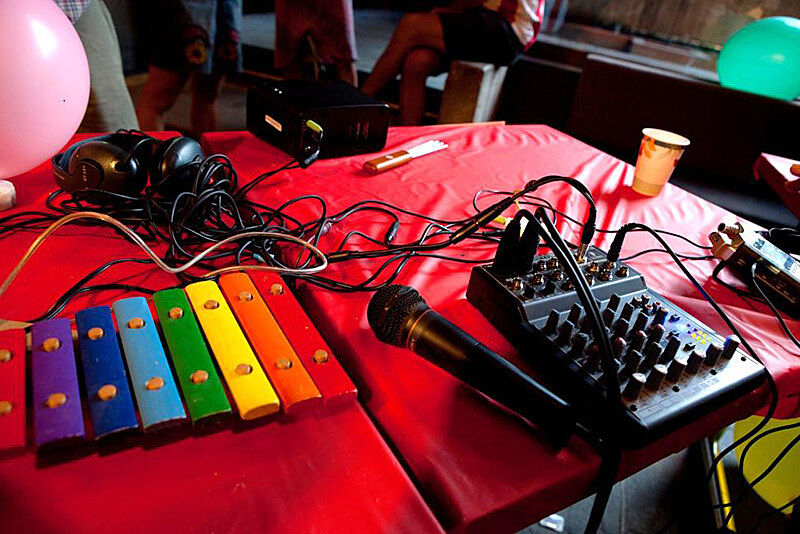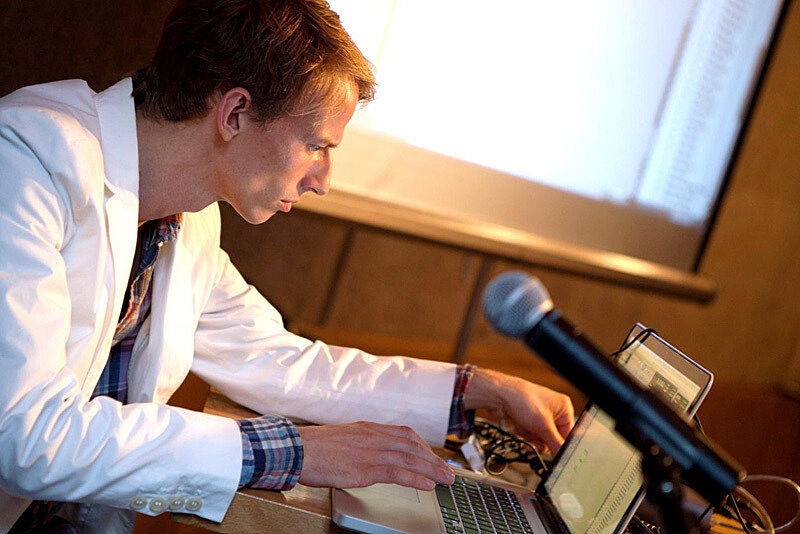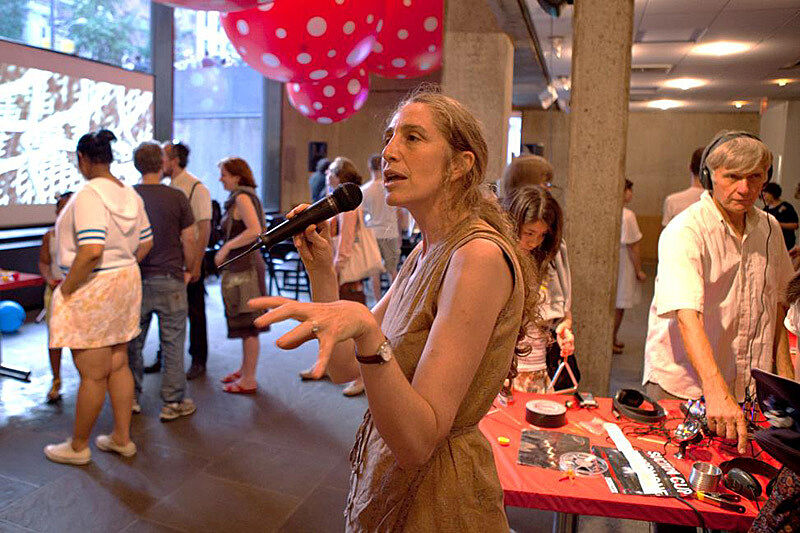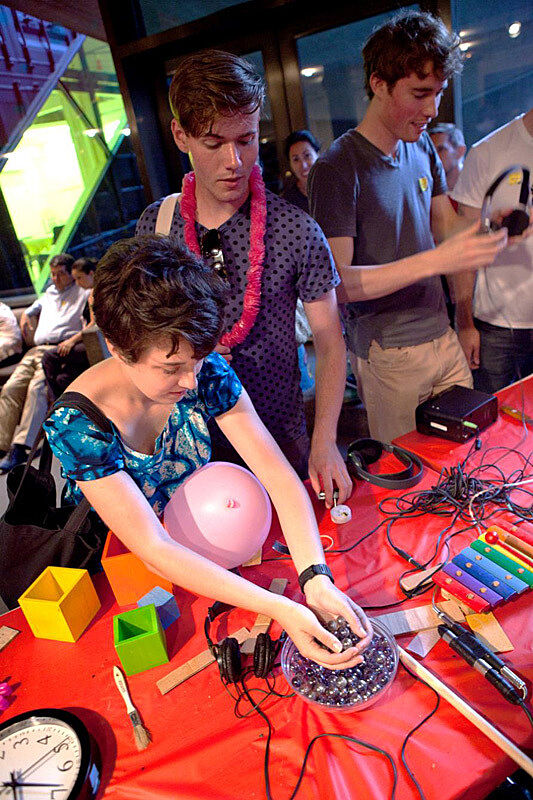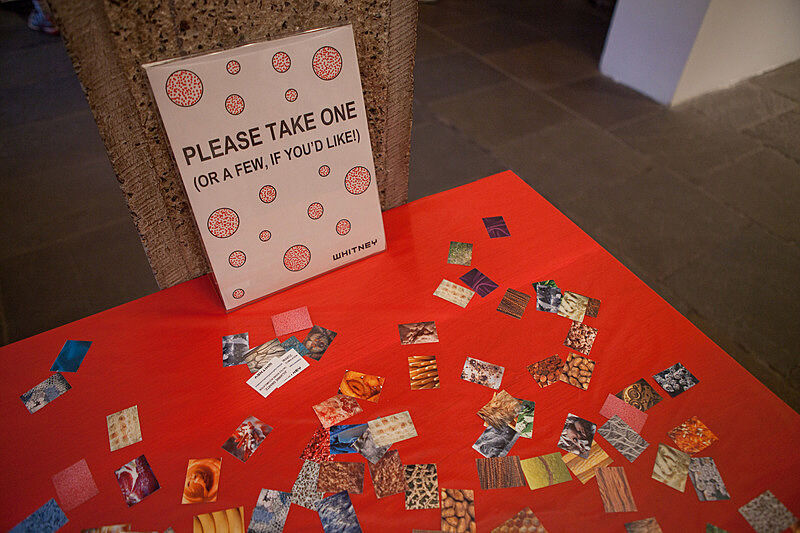Tactile Sound Accumulation With Julianne Swartz
Sep 19, 2012
On Friday, July 27, as part of the Whitney’s My Turn series, sound sculpture and installation artist Julianne Swartz led a live action event. Organized in conjunction with the Yayoi Kusama exhibition, Tactile Sound Accumulation encouraged visitors to contribute to a sound collage by recording their voices, movements, and interactions with tactile instruments and toys.
In her own work, Julianne Swartz stretches the limitations of what sound can do, exploring the intersections between the five human senses. Swartz found inspiration in Kusama’s large-scale installations and accumulations, as well as the Happenings Kusama staged in the late 1960s. In particular, Swartz was fascinated by Kusama’s use of materials, from the burlap seed sacks she used as supports for her early paintings to the stuffed fabrics employed in her soft sculptures. Using this wide array of fabrics, materials, and textures as a touch point, Swartz wondered how modern day visitors could seek out sound as texture, and experiment by making tactile sounds of their own, such as the sounds of a hand touching a wooden table, a balloon bouncing on the ground, or teeth chewing an apple. One of her goals for the program was for participants to explore the concept of “synesthesia,” or a crossing of sensory modalities, for example, experiencing sounds in response to touch or visual stimulation. Swartz would then compile each of these visitor-produced sounds to create a collaborative sound file or what she calls a “collage” of sonic textures.
Much like the theme of accumulation in Kusama’s work, the program offered its participants an enormous collection of objects that could produce distinct and intriguing sounds, including tambourines, drum sticks, clappers, balloons, bike horns, tissue paper, and streamers.
Standing just outside the Breuer building with an iPad and giant sign that read “TALK TO ME,” I encouraged visitors to participate and experiment.
“Talk to you?” someone asked. “What’s that all about?”
I replied, “Tonight, as a free Public Program, there’s an artist’s workshop in the Lower Gallery. The artist would like everyone to make different sounds that have to do with touch and texture—anything from zipping your backpack, to snapping your fingers, blowing a kiss, or whistling through your teeth--and I will record it. Then I’ll send the recorded file to a sound engineer downstairs, and he’ll mix it into a collage of different sounds. Are you up for it?”
Along with her sound engineers, Ian Turner and Bob Bielecki, Julianne Swartz operated digital technology and professional sound equipment to record and edit the collage. She provided contact microphones, audio microphones, hydrophones (underwater microphones), and suction cup microphones for the recordings.
The workshop evoked many of the concepts that drive Kusama’s work: obsession, repetition, immersion, and excess. In the Museum’s Lower Gallery, I watched the participants interacting with the piles of percussive instruments and toys. Some cranked music boxes or dropped marbles into a water-filled tin pan, while others shook egg-shaped maracas or plucked rubber bands. By the end of the evening, participants produced over two hundred diverse sounds, from the muted popping of underwater bubbles to the odd squeaking of audio tape being pulled over a contact microphone.
As physical souvenirs from the event, participants could rake through a heap of tiny cards, each with a close-up image of a distinct visual texture—the rubber backside of a toothbrush, the fur of a teddy bear, or an ear of uncooked corn. More importantly, every participant’s takeaway was their contribution to a real work of art by a contemporary artist. Each sound represents the influence of an individual, and they all add up to the sounds of a single evening, a group of people, and a collective experience.
The collaborative sound collage by Julianne Swartz is available to download.
By Sarah Konowitz, Public Programs Intern

